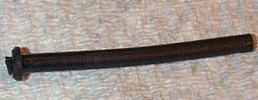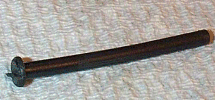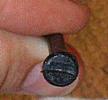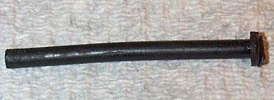Why use a metal guide rod??Back to Kel-Tec stuffNow I am not sure how I feel about this.... at first I was all for the metal guide rod, but now after seeing what happens I am not so sure. When you rack the slide the guide rod hits the tip of the barrel, and this happens with a lot more force when the gun is fired. That eventually puts a flat spot on the tip of the rod, and I'm sure is not good for the barrel. Then on the other side of the rod the top of it hits the bottom of the barrel when the slide goes forward (proved by the flat spot on the "head" of the rod). Lastly the metal "head" wears the aluminum frame where it rests on it. This did not get bad on mine, it basically just removed the finish, but I could see how this could get bad. These pics show what I mean: 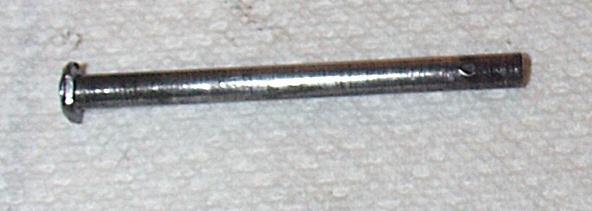
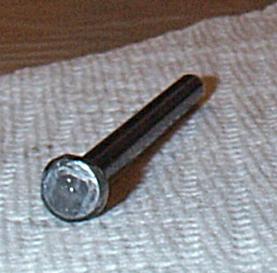
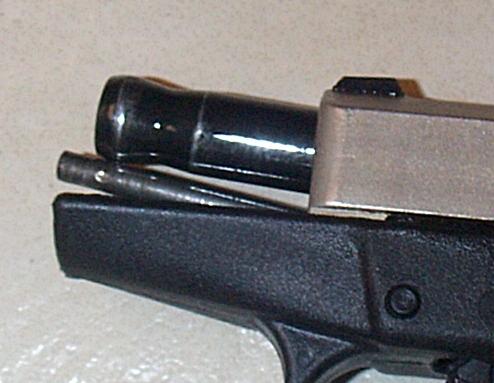
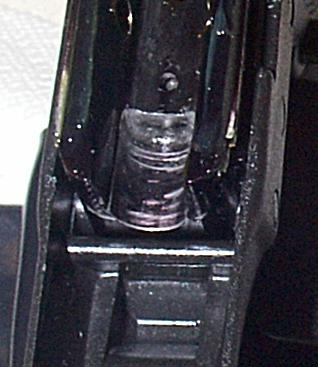
I have not heard of one person who has had the plastic guide rod fail in the p-11 so I am switching back to the plastic one in the p-11 (but keeping the metal one in the p-32 for now). Plastic Rod Wear
Here is some info from another KTOG member (TCHP):quote: The use of a metal recoil guide appears to be directly related to a problem with my slide jamming against the inner recoil spring and the recoil guide itself (a problem that I had just inquired about in an earlier thread). My steel recoil guide has actually worn away the top portion of the hole in the slide that the recoil guide passes through. This wear is probably due to the guide rod having a somewhat rough finish, coupled with the strong upward pitch that the guide rod takes as the slide travels back. You can see this wear in the image, and the result is that this hole is now slightly elliptical in shape, causing the innermost recoil spring to pop out into the enlarged gap that now exists between the recoil guide and the slide. When this happens, I am physically unable to pull the slide all the way back until I move the spring out of this position. Firing the gun may very well generate enough force to overcome this binding, but it would also generate additional stress against the recoil guide and where it rests against the frame of the pistol. If I had it to do over again, I would have used a plastic recoil guide, or at the very least polished the steel recoil guide. I am guessing I will have to send the gun in for repair. The only thing I can see that might save me from having to get a new slide is if the plastic guide rod is just a hair larger in diameter than the metal one, or if something can be done to the recoil spring to keep it from jamming between the slide and recoil guide. 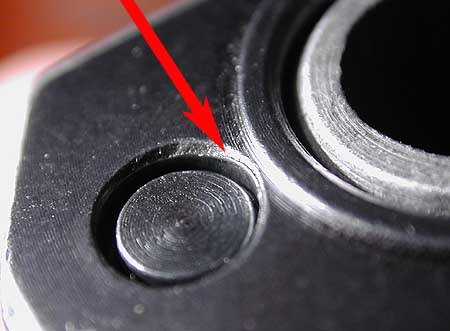
The problem he encountered keept him from being able to rack the slide, and could have been avoided if the rod was polished smooth first, but I'm sure some wear still would occur even with a polished recoil rod here were my original thoughts:My first reason is that it seems to me to be a part that might see a bit of abuse, with the slide rubbing on it every time it fires, and having to keep a fairly strong pair of springs in place while firing.... Evidently I am a bit wrong because the plastic ones have been reported to hold up rather well under normal conditions..... My second (and best) reason for the metal guide rod is this: 
That is a pic of a p-40 that got an overloaded round in it. The barrel split and blew out the bottom of the grip below it. The shooters hands were numbed for a bit, but not injured (he actually continued firing another gun later). The gun was not at fault (any gun would have reacted similarly with an over charged round), and many people were impressed by how much such a light gun protected the shooters hands (that they were not hurt). (BTW Kel-Tek fixed the gun at no charge, actualy they replaced most if not all of it) The shooter believed (as I do) that the metal guide rod is what kept the recoil springs in place and out of his fingers. A plastic guide rod probably would have given way and allowed the springs to injure his hand. That was enough for me!! Now for the down side.... they come machined pretty poorly (not very smooth)... I have heard of deteriorated reliability (mostly in p-32's) when using a new metal guide rod, but none if they smoothed then polished it first. I would not recommend using one right out of the box as it is not very smooth and will add friction to the movement of the slide (which could cause problems). The plastic rod will wear smooth very quickly, but the metal one will not. I sanded smooth mine (for the p-11 and p-32) with 400 grit (with length wise strokes), polished, cleaned with alcohol, then cold blued them. Now mine are metal, and smooth, and don't add any unnecessary friction to the movement of my slides. Bottom line right now, I have the plastic one in my P-11, and smoothed metal one in my P-32 (and metal is the only option in the P-40) |
